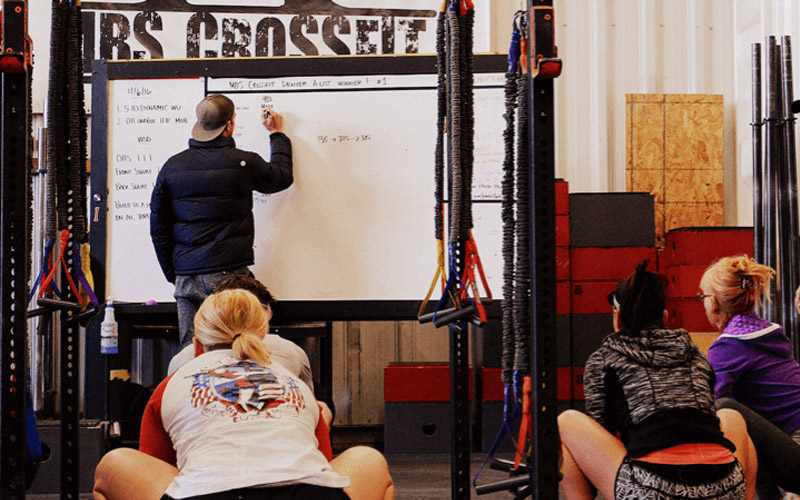Running a fitness business, there might not be anything more important than motivating, professional employees.
But how do you motivate the motivators and develop the best gym staff possible for your business?
How do you balance the needs of your business with the needs of each employee?
How do you create a fun, positive culture that doesn’t degenerate into a free for all?

It’s a never-ending balancing act that’s different for each business owner, of course. But there are some across-the-board principles that are just as important to your success as having the right equipment and the best programming.
A well-trained and motivated team can make all the difference in creating a positive environment for members and fostering long-term success.
Happy employees almost always lead to a happy environment for clients.
On the flip side, no customer’s going to stay with you long term if there’s bad blood in the air among employees. They’ll just leave your toxic environment for a better one.
So, let’s dive into the secrets of effective gym staff leadership, exploring strategies for developing and training your team, managing them effectively, and cultivating a culture of excellence.
Training and Development of Gym Staff
Do you care about the ongoing training and development of your gym staff? Or does your interest only go as far as the job interview, when you’re looking only at what they’ve done in the past and how it matches with your current needs?
(Read “Hiring Gym Staff? Pump Up Your Team with These Pro Tips.”)
Shift your mindset and remember that training and developing your gym staff – now and in the future – is crucial for ensuring they have the knowledge, skills, and confidence they need to excel for you.
So, keep these three things in mind.
1. Ongoing education. Encourage your trainers to pursue certifications, attend seminars, and stay updated on the latest trends and developments in the industry. Share information with them about online courses and educational materials.

2. Be specific. Some of the training programs should be tailored specifically for roles of each staff member. Some employees are personal trainers, others are front-desk staff… maybe you also have someone who helps with admin. Not all employees do the same jobs, so keep their individual needs in mind.
3. Mentorship and coaching. You don’t have to do everything yourself. Team up some crew with others who can guide them – for your business needs but also for their own professional growth. Show your managers how to give feedback, set goals, and promote the company values.
Along these lines, you should know what each employee wants in his or her career and how you can help. They’ll be loyal to a boss who sees them as an individual with specific needs – and who wants to help them on their own path.
If your gym has developed programming, or if you’re part of a franchise system, then make sure all the trainers know it. Don’t just assume that they’ll figure it out.
Create a system to make sure that the programming you’ve developed is definitely being shown to clients. Protect your brand by ensuring a consistent user experience.
For non-training staff, train them in company values and business practices relevant to their job tasks.
Avoid the urge to micro-manage. Instead, hire and train the right people, point them in the right direction, and trust them to do the job.
This one can be hard for a lot of gym owners. You might have this urge to do everything yourself or worry that no one will do it right.
You can hire a gym manager to oversee the entire operations, of course. But many reading this are owners and operators, so it’s important to have clear definition of roles so you don’t drift into “just let me do it” disease.
Systems are essential here. Otherwise, you’ll have a bunch of people winging it – not a team following your playbook.
Managing Your Gym Staff
Think about some of the worst bosses you’ve ever had. Were they effective leaders? Did they make everyone on the team feel supported? Were they good communicators?
OK… probably “NO” to all three of those!
A good gym or studio manager is all those things and more with gym staff. You should appreciate the diverse team you have, all with varying skill sets and personalities… Within the boundaries you have developed for your business, you can find great rewards in managing them.
1. Set clear expectations. Remember that terrible boss? Did you ever wonder, “What the heck do they want from me anyway?” There’s nothing worse for an employee than getting mixed signals – verbal and otherwise – from the boss. Be clear, consistent – and realistic.
2. Keep communications open. You want your employees to know they can approach you about anything. You should make it clear, in word and deed, that you want them to express their ideas and concerns. This is good for the business and for team morale.
3. Lead by example. Don’t just tell them what you want – SHOW them what you want. BE the example. Get them to think, “What would the boss do” in a certain situation, and make sure they have a pretty good idea.

You’ll need systems on HR issues, conflict management, job descriptions, and evaluations.
Consider hiring an operations manager or assigning a lot of these duties to someone within the organization so that you’re able to lead the whole business without getting bogged down in any one category, like scheduling or ordering supplies.
Is that why you got into business for yourself?
Building a Winning Culture
Creating your gym’s culture is one of the most rewarding challenges you can ever have. It involves everything about your business, and it can be a powerful expression of what you value, believe and promote.
For gym staff, that means a place where they feel valued, too. A safe place where they can grow. A dynamic place that creates impact in clients’ lives.
1. Praise success. Just like it’s a good idea to acknowledge when a client gets closer to a goal or passes a milestone, the same is true for gym staff. So, create a system to reward them for doing little things well, praise them at meetings, announce their anniversary dates, etc.
2. Help them help each other. Think of your gym staff as a team – players who get along together and complement each other’s skills and weaknesses. Promote their bonds at work and even outside of it, with group outings, whether strictly fun or business related.
3. Let them “own” it. Everybody likes to feel in charge of something sometimes… to take the ball and run with it. So, look for appropriate opportunities to let everyone play the lead role and be supported by the whole organization.
You can’t overemphasize the need for communications in creating this winning culture.
“Lack of communications” is right up there with “What the heck does he want from me?” among gym staff frustrations.
Communications is a constant process, and it’s not just two-way but all-way, since you’re talking with staff, clients, business partners, community members, vendors, and more.
Are your company values written and shared among the team?
Do you have a sales script?
Do you use a team communications system of group messaging to keep everyone up to speed all the time. Naamly’s tools can’t be beat, and we’ll show you how to bake them into your daily operation so that no one ever misses out.
· Hold weekly team meetings and regularly scheduled one-on-ones, in addition to performance reviews.

· Share updates and seek input about possible plans in person and through written communications, like a team newsletter.
· Ask your team members a mix of open-ended questions and yes/no questions, so you get a fuller picture of what’s going on throughout your business.
· Be a real person. Let them see your humor, vulnerability, and curiosity.
· Never assume that “everybody knows that” just because you said it once somewhere.
You’re the leader, so communications is your responsibility.
If you’re not a good communicator, you can learn to become a better one or delegate many of the tasks to a high-ranking team member. Just don’t leave it out there undone.
Gym Staff in the Big Picture
In conclusion, your effective gym staff leadership is about more than just managing schedules and covering the basics.
You also can inspire and support each team member to improve as an individual and as a representative of your business.
If they’re not well informed, enthusiastic, and all singing from the same sheet of music, then clients won’t want to stick around.
So, create a thriving environment for gym staff and customers alike.
Keep them engaged, challenged, and focused on delivering the best fitness experience possible. Everybody wins.

If you want to broaden your network and find the best talent, download Naamly’s FREE guide: “12 Places To Hire Your Next Star Trainer.” It’s loaded with pro tips you can start implementing today to create your dream team.

